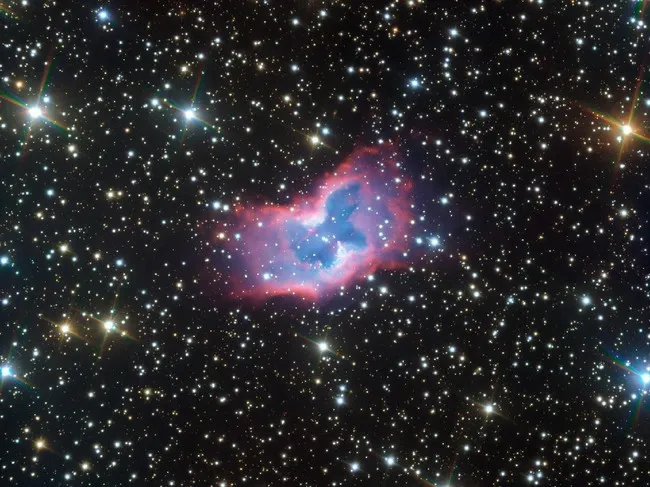
Astronomers Capture the Amazing Butterfly Nebula image: ESO
Thousands of light years from Earth, astronomers find a very amazing sight. They found a cosmic 'butterfly' with an amazing combination of red, purple and blue.
The butterfly turned out to be a planetary nebula discovered by the Very Large Telescope (VLT) in Chile belonging to the European Space Observatory (ESO). The symmetrical shape does make this space object look like a colorful butterfly.
Although called a planetary nebula, this space object has no connection with the planet. This object is a giant cloud of dust and gas that forms around unexploded ancient stars.
When it was first discovered using an ancient telescope, astronomers saw it as being like a planet, so it was given a name like that. But with more sophisticated telescopes, it was only clearly seen that this object was actually only gas.
Quoted from Digital Trends, Monday (3/8/2020) astronomers named this nebula NGC 2899. This object is between 3,000 and 6,500 light years from Earth in the constellation Vela.
This photo was captured using a VLT instrument called FORS or FOcal Reducer and low dispersion Spectrograph. This Nebula has very high temperatures and the hot gas around it shines to create such amazing colors.
"NGC 2899 gas extends to two light years from its center, shining brightly in front of the stars of the Milky Way when the gas reaches temperatures above 10,000 degrees Celsius," ESO wrote in his statement.
"The high temperature is due to the large amount of radiation from the parent star nebula, which causes hydrogen gas in the nebula to glow with a reddish halo around oxygen gas, which is blue," he continued.
Astronomers believe that this nebula has an unusual shape because it has two main stars, which push and illuminate gas in a symmetrical way. This type of nebula is called bipolar and there are only 10-20% of nebulae that belong to this type.
Unfortunately, the age of this nebula in the universe is not long. The light coming from ultraviolet radiation will only last for a few thousand years before it fades. This is a relatively short time in astronomy.